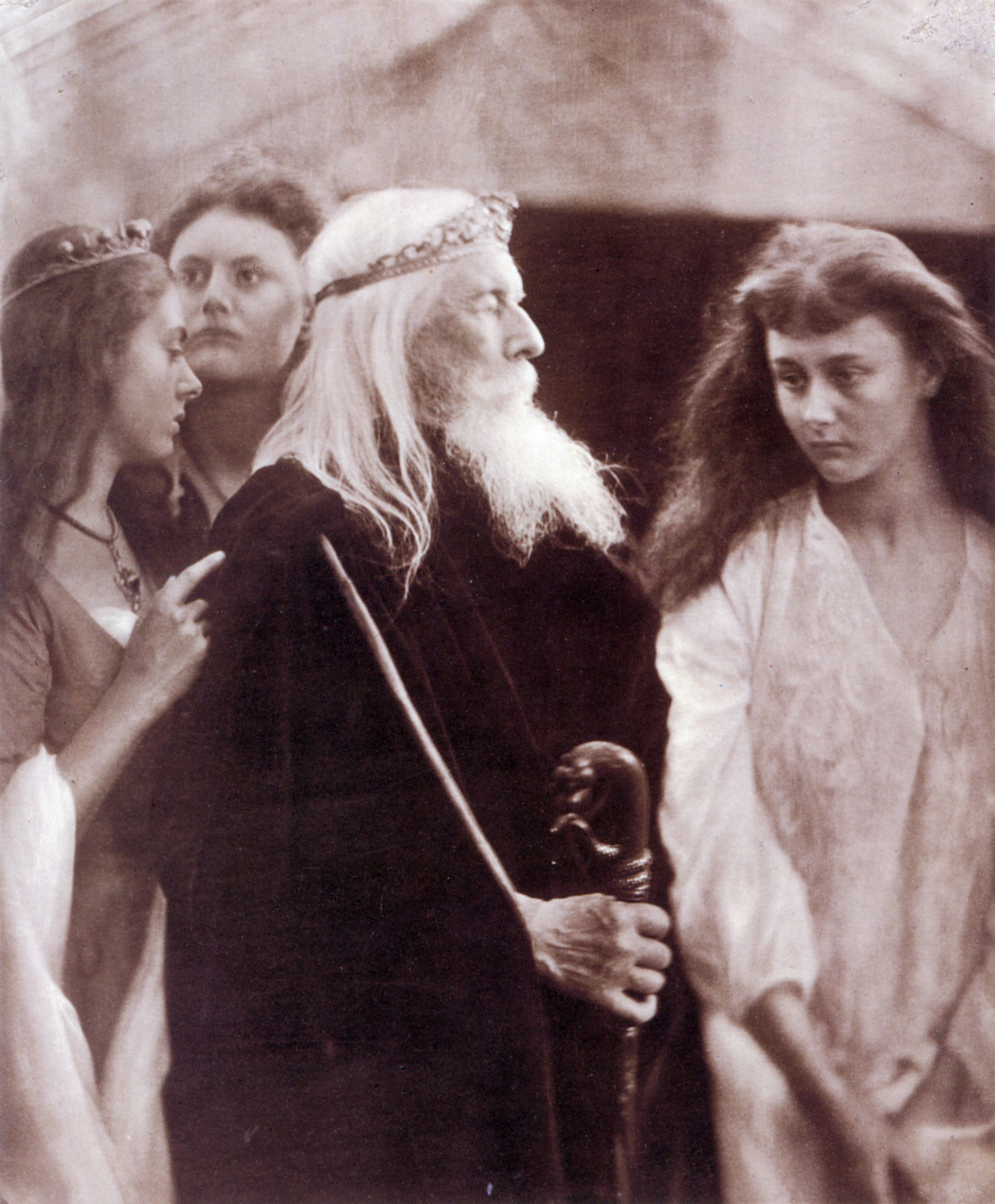 |
| King Lear allotting his kingdom to his daughters by Julia Margaret Cameron, 1872 |
I admit it. I haven’t read any Shakespeare since college, and that was (deep breath) nearly 20 years ago. I’ve read a good deal of The Bard in my time, but, somehow, King Lear escaped my attention. Book Phantom has remedied that. When I began the play, I confess, the language was challenging. I had to relearn how to read good Will. I found it helpful to read aloud, because Shakespeare just sounds so darn good. This exercise took me back to eleventh grade English in high school. My teacher, Ms. Thomason, god bless her, had great taste in literature. I give her full credit for instilling an appreciation of respectable reading. Anyway, whenever we read plays aloud in class, Ms. Thomason almost always chose me to read the lead female parts. That year I was Hedda Gabler, Medea, Antigone, and Lady Macbeth. Either I was the only kid in class who could halfway read aloud, or Ms. T was trying to keep me from chatting up my neighbor across the aisle. Nonetheless, I loved every minute of it, and this experience served me well when I read King Lear.
Of all Shakespeare’s plays I could have chosen, why did I choose Lear? Perhaps it’s because I am the youngest of three sisters, and I related to Cordelia. Also, it seems so many books and movies reference Lear (A Thousand Acres comes to mind), and I needed to know more. I was not disappointed – the word craft, the drama, the villains, the heroes, the tragedy – all timeless.











